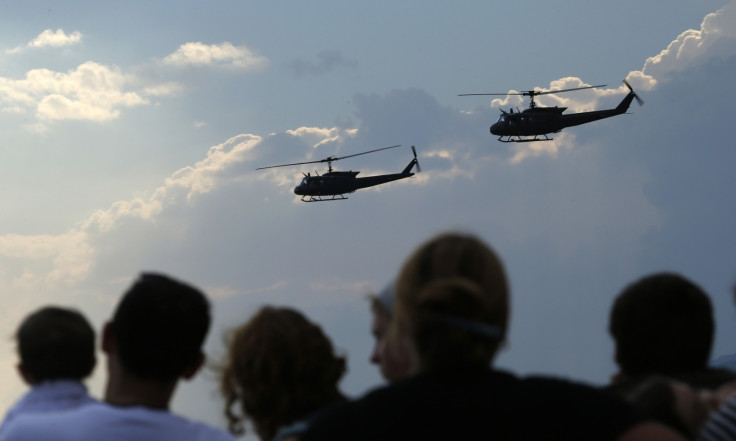A self-flying helicopter? Naval researchers demonstrate fully autonomous delivery system
The technology demonstrated can add self-flying capabilities into any rotary-wing aircraft.

An older helicopter fitted with a new technology that can add self-flying capabilities into any rotary-wing aircraft was successfully demonstrated at Marine Corps Base Quantico, Virginia recently. The tech, dubbed Autonomous Aerial Cargo Utility System (Aacus), is expected to prove beneficial in aiding marine resupply missions.
For the demonstration, an old Boeing UH-1H helicopter was reportedly installed with the new technology and outfitted with the required hardware. Once all the setup was placed, a troop requested the supplies using a tablet.
Once the request was placed, the modified helicopter loaded with supplies took off autonomously and navigated from one point to another to make the delivery.
The Office of Naval Research (ONR), which co-sponsored the project with technology company Aurora Flight Sciences, believes the technology could be used on the front lines where a soldier could get supplies with the click of a button, akin to app cab services popular in cities across the world.
"The system consists of a sensor and software package that can be integrated into any manned or unmanned rotary-wing aircraft to detect and avoid obstacles (like telephone wires, other vehicles or large ground objects) in unfavorable weather conditions, or to facilitate autonomous, unmanned flight," ONR said in a report.
The report quoted experts as saying that the need for a self-flying delivery system surfaced during Marine Corps operations in Afghanistan and Iraq when cargo helicopters and resupply convoys of trucks were required to bring in supplies such as fuel, food, water, ammunition and medical supplies to the front lines under adverse travelling scenario.
Aacus has been designed in such a way that it can be operated with minimal training.
Officials at ONR and their industry partners @AuroraFlightSci announced today a successful, final flight demonstration of an AACUS-enabled helicopter. #AACUS can be installed on any helicopter to increase its capability to full autonomy. https://t.co/qtEkrVpVSd pic.twitter.com/gHPUFMiTsW
— ONR (@USNavyResearch) December 13, 2017
"This is more than just an unmanned helicopter," Walter Jones, ONR executive director, said. "Aacus is an autonomy kit that can be placed on any rotary-wing platform and provide it with an autonomous capability. Imagine a Marine Corps unit deployed in a remote location, in rough terrain, needing ammunition, water, batteries or even blood.
"With Aacus, an unmanned helicopter takes the supplies from the base, picks out the optimal route and best landing site closest to the warfighters, lands, and returns to base once the resupply is complete — all with the single touch of a handheld tablet," Jones explained.
The successful demonstration of the self-flying helicopter concluded the final phase of its five-year-long testing programme. Next, the Marine Corps will look experiment with the new system before deciding whether to buy the technology.
"We've developed this great capability ahead of requirements and it's up to us to determine how to use it," Lieutenant General Robert Walsh, commanding general, Marine Corps Combat Development Command, said. "The young Marines today have grown up in a tech-savvy society, which is an advantage. We've got to keep pushing and moving this technology forward."





















